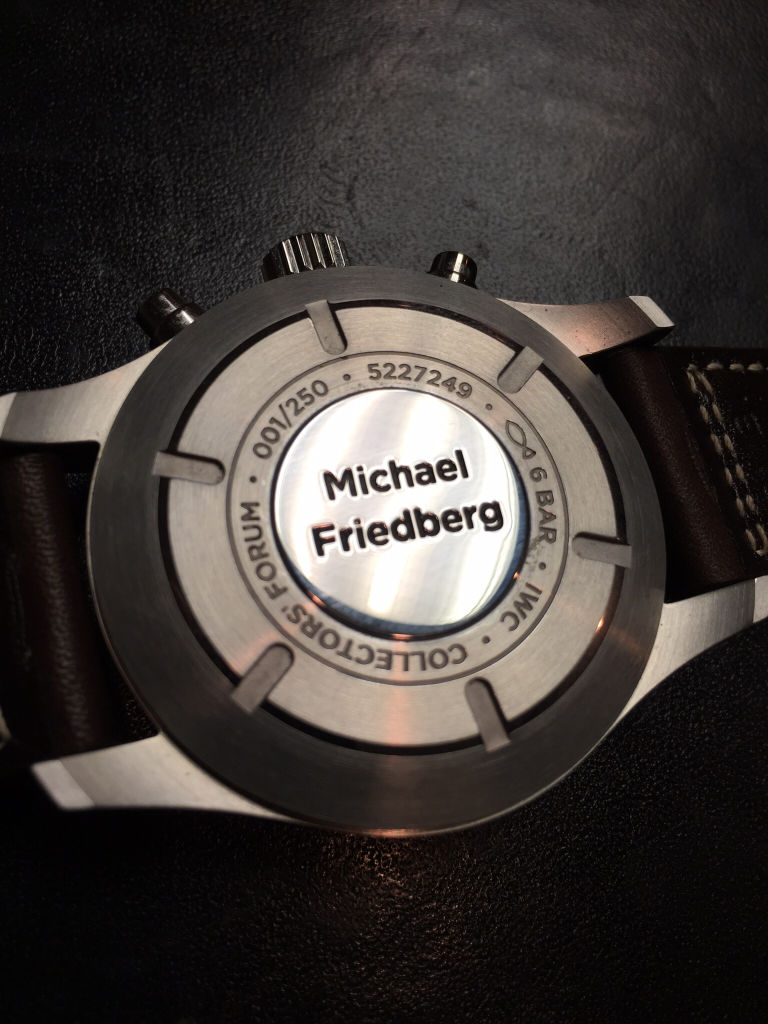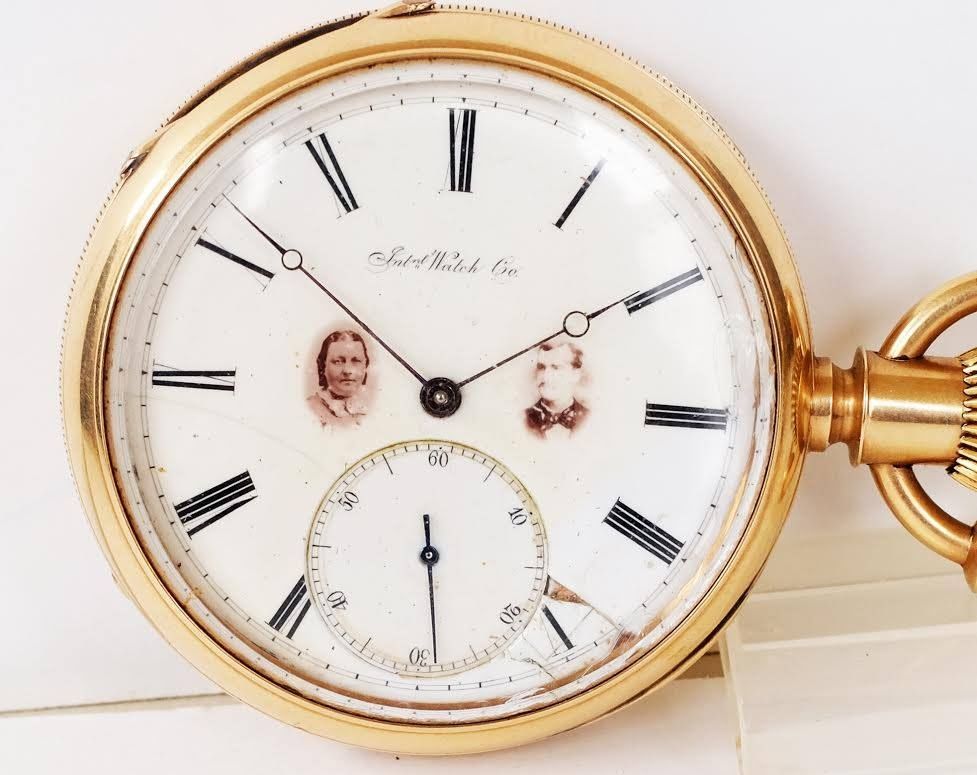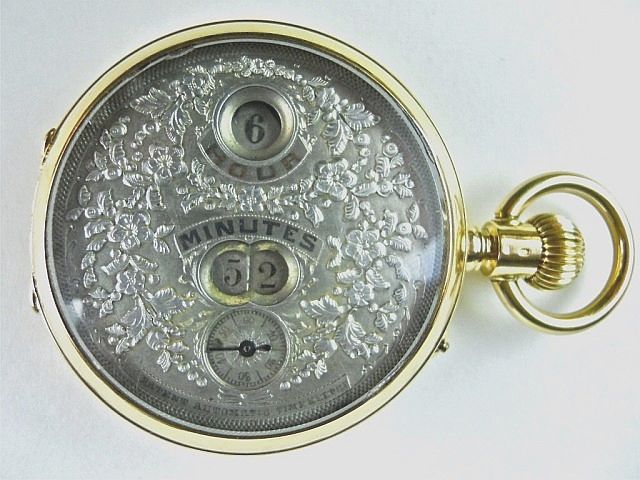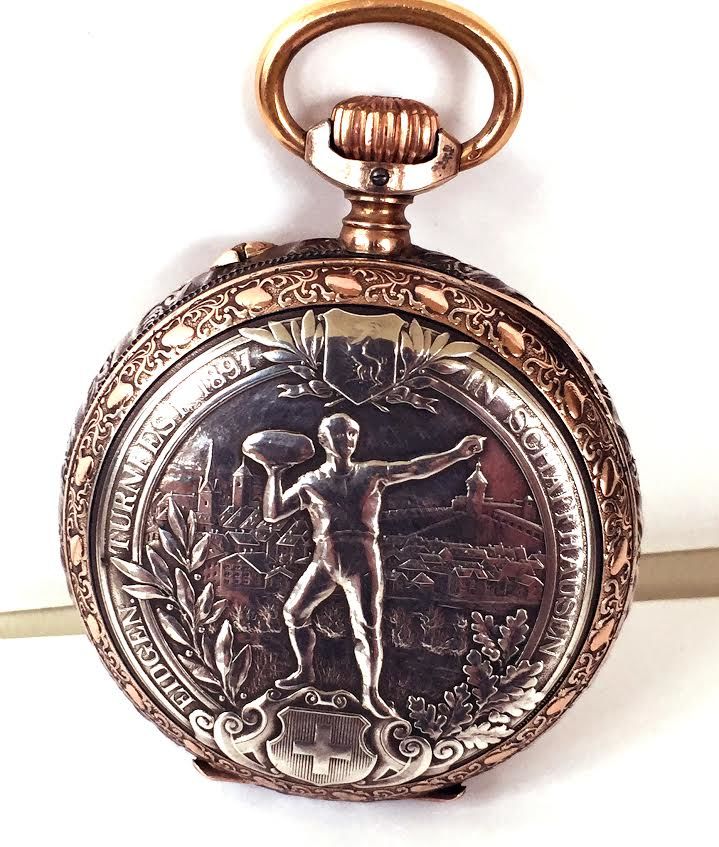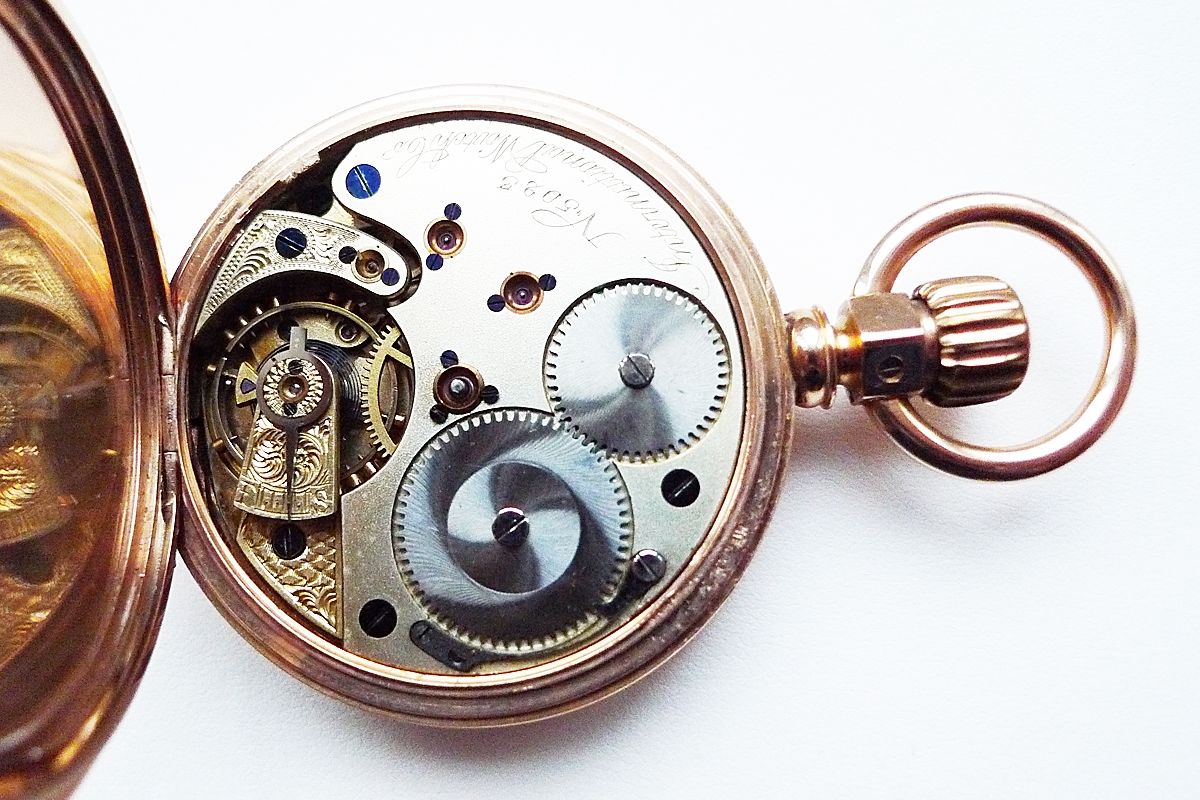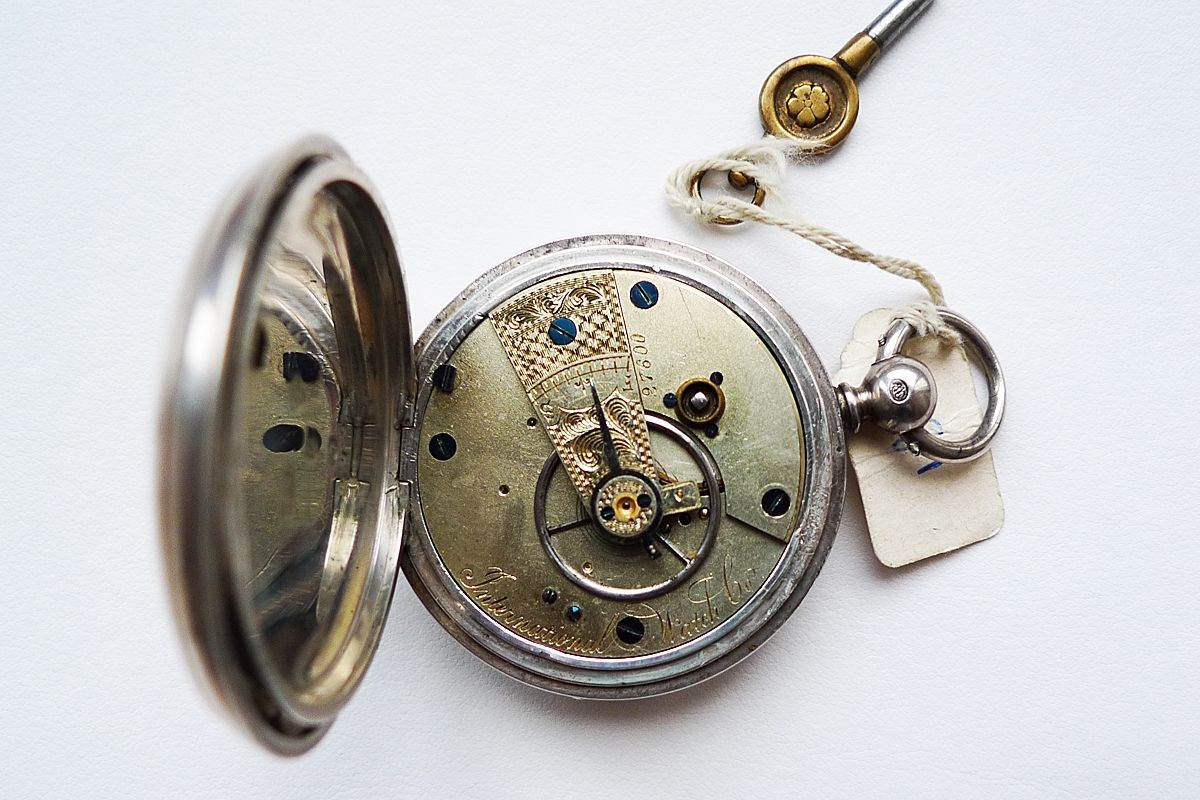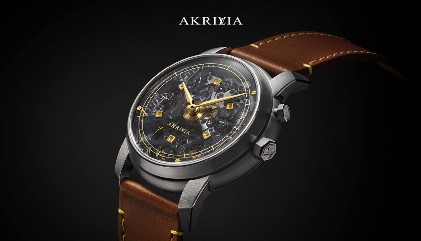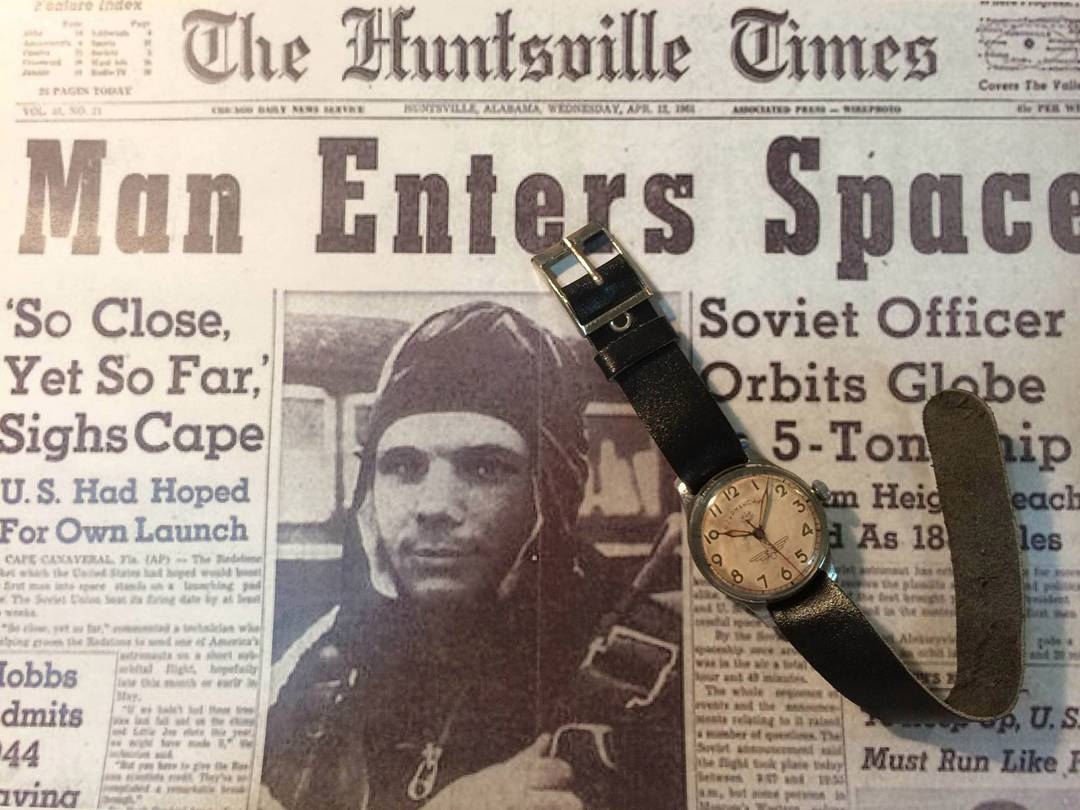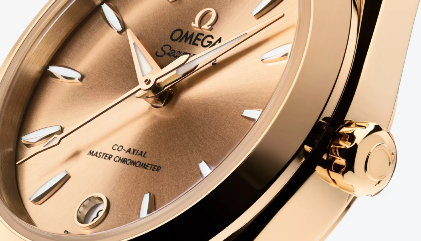WTI: When were you first introduced to the world of watches? What was your first timepiece?
MF: While I was a teenager, my dad took great pride in this Omega Constellation he had and then for his 40th birthday he bought a Rolex. I think those purchases made a lasting impression on me. I don’t recall my very first watch but I wore a Timex while in the Army. Then in college, I bought a Tissot, which I no longer have. This was followed by an Omega calendar watch, and then it just never stopped.
WTI: Do you collect anything else apart from vintage timepieces?
MF: For over 30 years now, I’ve been collecting classic photographs by European photographers from the 1920s and ‘30s, like Cartier-Bresson and Kertesz. My wife Kay and I recently donated about a dozen images to the Museum of Contemporary Photography for their permanent collection.
Favorite IWC wristwatch
WTI: Which are the most prized watches in your collection?
MF: I’ve tried to document the history of IWC in the 19th century with prime examples of their pocketwatches. To me, pocketwatches are historically important and also beautiful objects in their own right. It’s hard to pick a prized possession, it’s like picking a favourite child. They’re all wonderful. But, if I had to name a few, there are three I really love.
A very early IWC Jones pocketwatch with images of a man and woman on the dial. It’s unique and if I could only figure out who they are! It’s probably one of IWC’s first watches and I appreciate its historical importance.
Then there is an IWC Pallweber watch that I admire for its special dial and digital hours and minutes. I love its repoussé dial, an intricate form of metalwork. It was first sold in the mid-1880s by a dealer in Mumbai, India.
And the third one I love is an 1897 IWC Turnfestuhr, a watch originally given as a prize in an athletic competition in Schaffhausen. It depicts a man throwing a stone, one of the contests. I like its special casework and historical significance.
Some I love for what they historically represented and others for their movements, their dials or the casework.
WTI: Talking of movements, could you take us through the evolution of the Elgin movement over the years?
MF: The complete answer to this might take 20 pages here but simply stated, IWC began producing watches with the “Elgin” movements in the early 1880s and no one knows why they chose that name. Many of those watches have relatively typical movements for their era. Most of the calibers, especially the early ones, were produced in very limited quantities. It’s again this rarity that makes them collectible. The first Elgin I model had a Caliber 32 movement and it is from the early 1880s. In the mid-1880s, IWC tproduced its famous digital Pallweber watches, using Elgin II movements, most of which were Caliber 42s. Interestingly, the same design was used in a few regular “analog” pocketwatches, with Caliber 38 and 39 movements.
In the late 1880s and early 1890s IWC produced Elgin III movements, including Calibers 48 and 49. These then evolved into Caliber 52 movements and, in the hunter version, Caliber 53.
The Elgin calibers are generally quite rare but pocketwatches with IWC Caliber 52 or 53 are very common. In fact, almost 300,000 were produced over 50 years. That’s huge. While most of these are not rare, they are fine “workhorse” movements. They still keep excellent time today.
WTI: What makes the Caliber 34, the Elgin I with hidden winding wheels, so special?
MF: It’s a perfect example of rarity making a watch special. Less than 10 are known to exist, and IWC used “hidden” winding wheels to have an uninterrupted three-quarters plate. All the known ones have numbers below 700, which means they were early attempts by IWC at developing movements. Not the earliest though, since the 1880s witnessed IWC starting over with its serial numbers. The hidden winding wheels are a bit more complex to produce and assemble but the plates can be decorated.
Caliber 34 - Elgin 1
WTI: What is the most interesting feature about a Jones pocketwatch and a Seeland pocketwatch?
MF: They’re special for their rarity and their historical significance. Prime examples of these can be very difficult to find. Jones and Seeland pocket watches were what IWC produced during the first decade of its existence. Jones were high quality watches for their era, with most having stem winding and setting and other technical features. To sell better, IWC then produced less costly Seeland models, most of which were unremarkable in features. It’s more about rarity and history.
Jones Movement
Seeland Movement - Calibre 24
WTI: You had once said "The beauty of mechanical watches is that they pay tribute to the past while representing the future". How true is this for timepieces produced today?
MF: I’ve thought a lot about this, especially because today watchmakers are getting more creative in bold directions. But it’s still true, virtually all mechanical watches today use a movement with a Swiss lever escapement, which has been around forever.
WTI: What do you feel about the constant evolution in the watchmaking industry, specially with the influx of technology?
MF: Evolution is of course good, even to a traditionalist like me. But some of the recent changes seem like changes for the sake of change. To be different, in itself, is neither good nor true evolution. Still, I appreciate many of these changes. Technically, I think some companies are making huge advances in industrialisation. Consumers don’t see that directly but it allows TAG Heuer, for example, to produce a relatively inexpensive tourbillon. And I see some real advances in high-end watchmaking, like the renewed emphasis on remontoirs. It’s all good stuff.
WTI: A lot of youngsters are also going for smartwatches. What would you advise them?
MF: Start slowly and learn as much as you can. A little knowledge goes a long way. Good dealers are experts and can teach you a lot. On the Internet all information is readily available. The more you know, the more you can appreciate what makes a watch special. You needn’t buy expensive watches to have a great collection. I’ve seen some collections of Seikos, for example, that are both useful and interesting. The same is true for vintage watches. Consider early electronic watches, many early military watches and more.
WTI: Lastly, according to you, what is the difference between a serious watch collector and someone who collects watches?
MF I think we should distinguish between an “accumulator” and a collector. An accumulator buys whatever he or she likes. Sometimes that’s just walking into a store and saying “charge it”. But I like accumulators too, their collections are diverse and often interesting.
However, I admire people who think about what they buy, and search for those pieces. Their collections have themes. They’re serious.






